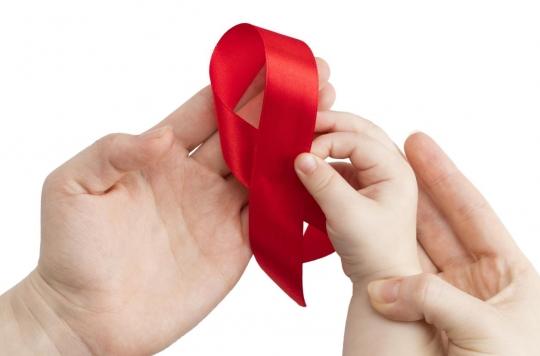In the United States, for the first time, eight children born without immune defense could be saved thanks to a treatment combining chemotherapy and gene therapy with the AIDS virus (HIV).

A world first. In the United States, eight newborn babies with “bubble babies” syndrome, a rare genetic disease affecting only one in 200,000 births, have been saved thanks to a new treatment. The latter, which combines chemotherapy and gene therapy with the AIDS virus (HIV), was described in detail in an article published on April 18 in The New England Journal of Medicine.
To treat children born without an immune defense and condemned to spend their lives in a bubble cut off from the world and its microbes, doctors at St. Jude Hospitals in Memphis and Benioff Children at the University of California came up with the idea of to add chemotherapy to the traditional gene therapy which consists of taking stem cells from the patient to inject the missing gene in the laboratory.
Usually used against cancer, the aim of chemotherapy here was to remove all the cells from the patient’s bone marrow. “Until now, we did not do it because we felt that it was to make him take an additional risk”, explains Anne Galy director of research at Inserm / Généthon at Figaro. “If we remove his bone marrow and then the transplant doesn’t take, he loses his immune system forever.” Realizing that chemotherapy was the only way to permanently transplant the entire immune system, the researchers took the risk.
An HIV synthesized in the laboratory
In addition, they used the human immunodeficiency virus, better known as HIV, to transport the gene to the heart of cells. “The interest of HIV is that it makes it very easy to insert a copy of the normal gene into the DNA of cells”, explains Anne Galy. This kind of virus “are synthesized in the laboratory, like drugs, but are not infectious. We only keep the properties that interest us. It’s a bit like a shell”, continues the researcher. This technique has been used for a long time in gene therapy.
And it worked perfectly. One month after receiving the treatment, only one baby required a second dose. A year later, the eight children are off the hook. “These patients (…) respond to vaccines and have an immune system allowing them to manufacture all the immune cells they need to protect themselves from infections”, notes Dr Ewelina Mamcarz, co-author of the study and doctor at the bone marrow transplant and cell therapy service at St. Jude Children’s Hospital in Memphis.
“Although longer follow-up is needed to assess the late effects of treatment, these results suggest that most patients treated with this gene therapy will develop a long-lasting and complete immune response without side effects”, added Prof. Mort Cowan, pediatrician at Benioff Children’s Hospital at the University of California, San Francisco.
Thus, the researchers “hope that this therapy, which includes several novelties, will serve as the basis for the development of gene therapies to treat other devastating blood diseases”. Because at present, these therapies are only used in clinical trials and several patients treated in this way have then developed leukemia or seen the effects of the treatment wear off after 15 to 20 years. A few years ago, however, a Franco-American trial had already borne fruit, managing to cure seven baby bubbles.
Very limited life expectancy
Severe combined immune deficiency is better known as “Bubble Boy syndrome”, in reference to the first patient affected by this disease in 1971, David Vetter, who had to spend his short life in a bubble to protect himself from potential infections. . This disease is due “to the absence of a structure on the surface of the cells of the immune system. Without this, the cells are as if blind: they cannot move, do not proliferate, do not activate”, explains Anne Galy.
A deficit caused by an error in the genetic code. Babies born with this syndrome therefore have an immune system but it is as if it were switched off. And if at delivery the baby seems healthy, very soon he begins to catch all kinds of infections (pneumonia, meningitis, sepsis, etc.) which put his life in danger. If no action is taken, its life expectancy is very limited. Thus, David Vetter died at the age of twelve despite a bone marrow transplant, the treatment most used to treat bubble babies.
Unfortunately, in addition to being extremely restrictive (taking immunosuppressants for life, development of cancers), this solution is not universal. Indeed, children who do not have compatible donors around them run the risk of rejecting the transplant. This is why the feat reported today opens the way to new and very encouraging prospects.

.














